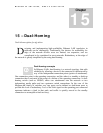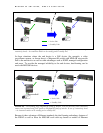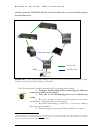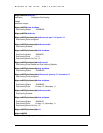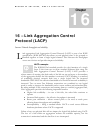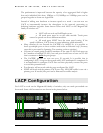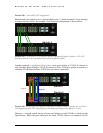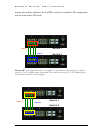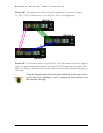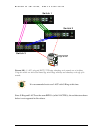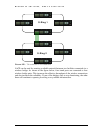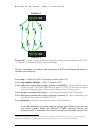
MAGNUM 6K SWITCHES, MNS-6K USER GUIDE
Chapter
16
16 – Link Aggregation Control
Protocol (LACP)
Increase Network throughput and reliability
ink aggregation Link Aggregation Control Protocol (LACP) is part of an IEEE
specification (IEEE 802.3ad) that allows several physical ports to be grouped or
bundled together to form a single logical channel. This increases the throughput
across two devices and provides improved reliability.
L
L
T
L
ACP concepts
he IEEE802.3ad standard provides for the formation of a single
ayer 2 link from two or more standard Ethernet links using the
Link Aggregation Control Protocol (LACP). LACP provides a
robust means of assuring that both ends of the link are up and agree to be members
of the aggregation before the link member is activated. LACP trunking is a method
of combining physical network links into a single logical link for increased
bandwidth. With LACP the effective bandwidth of a trunk and network availability is
increased. Two or more Fast Ethernet connections are combined as one logical
trunk in order to increase the bandwidth and to create resilient and redundant links.
By taking multiple LAN connections and treating them as a unified, aggregated link,
Link Aggregation provides the following important benefits:
j
• Higher link availability – in case a link fails, the other links continue to
operate
• Increased link capacity – the effective throughput is increased
• Better port utilization – allows unused ports to be used as trunk ports
allowing better throughput and availability
• Interoperability – being a standard allows LACP to work across different
hardware platforms where LACP is supported
Failure of any one physical link will not impact the logical link defined using LACP.
The loss of a link within an aggregation reduces the available capacity, but the
connection is maintained and the data flow is not interrupted.
193





